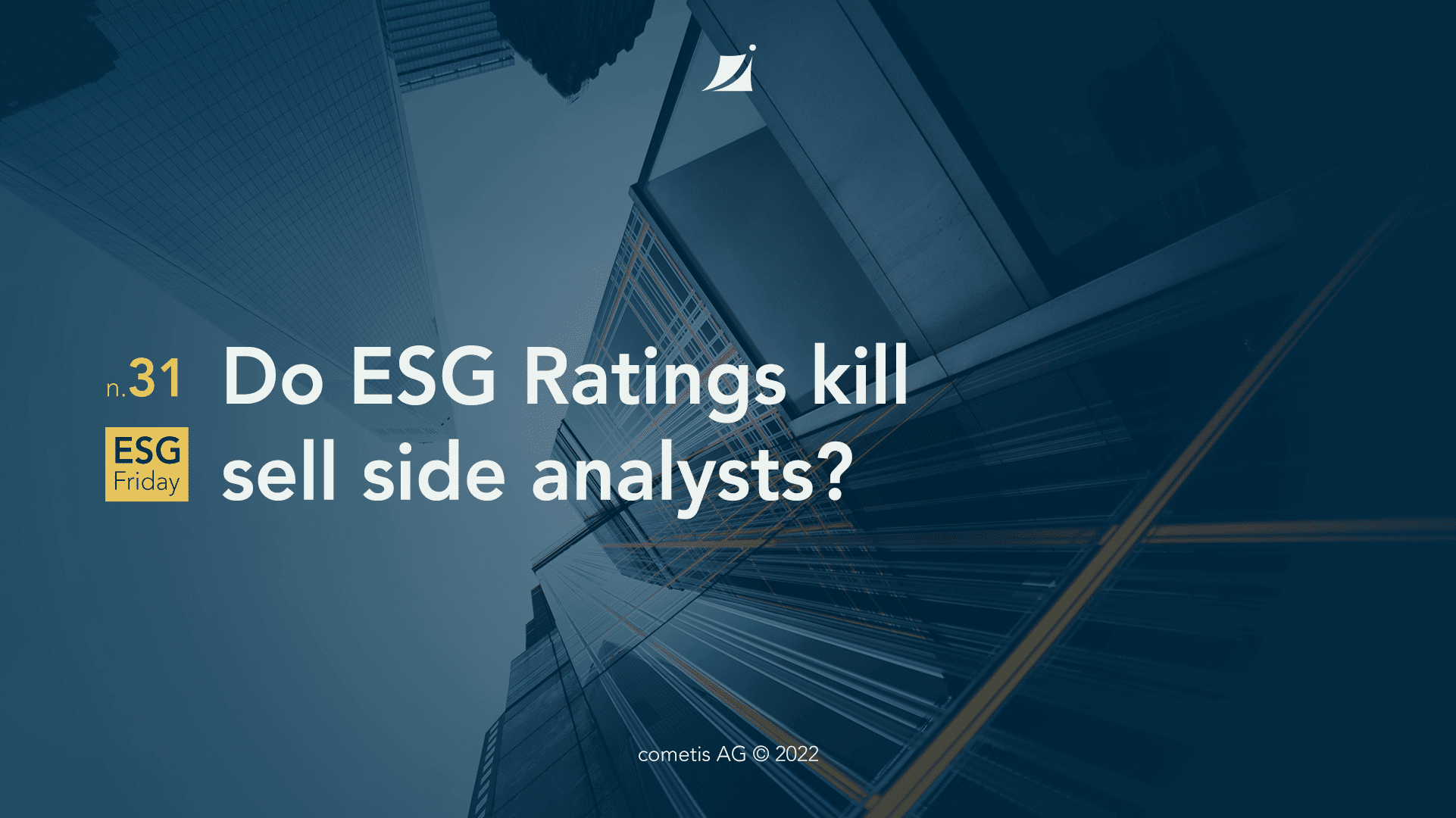The demand for sound ESG data among investors is growing. The buy-side is the driving force. Are sell-side analysts dying out due to ESG ratings?
Wiesbaden, November 19, 2021. The Corona pandemic has accelerated many developments, above all the ESG trend in the financial sector. Especially during the crisis, it became apparent that companies with a good ESG rating are particularly sought after by investors. Companies that underestimate the importance of ESG will face serious financing problems in the future. This makes it clear: in the ESG sector, the buy side is the driving force.
ESG: Buy side drives sell side analysts before it
While the buy side has been offering investment products on the topic of sustainability for some time, either based on (non-)government guidelines, public opinion or the international trend towards alternative investments for clients, sell side analysts currently pay little attention to the ESG area in their securities recommendations. Moreover, the latter have a hard time in the ESG space, as there are more and more specialized ESG ratings and rating providers that provide paying investors with their own expertise.
Since there are a large number of ratings and players on the market in addition to a few large providers, uniform standards are a long way off. The “hunger” of investors for comparable and decision-supporting ESG data cannot be met from the sell side. The increasingly strict requirements and regulations, such as the EU taxonomy or national laws, demand specialization. This is because the clearer rules contrast the previously relatively free definitions with fixed criteria. Thus, ESG ratings in turn become more detailed, meaningful and comparable, because rating agencies include these criteria in their ratings. As the sell-side does not have the capacity to keep up with this development, it is currently losing ground in this increasingly important area.
Algorithms as a factor in the ESG sector
But it is not only sell-side analysts who are at risk. For algorithms are increasingly taking the work out of ESG analysis for all analysts – or even away from them. While ESG information is not as easy to quantify as the usual financial ratios, smart algorithms are getting better at processing it too. While this makes the work of rating agencies and other players easier, it also risks replacing analysts.
For companies this means: they must increasingly adapt to the evaluation by analysts by preparing their data accordingly in a machine-readable way and according to the common standards in reporting. And that’s enough? No. Human analysts may currently be falling behind in the field of ESG, but that does not make them completely irrelevant – and they will certainly do everything in their power to regain relevance. Therefore, companies should become proactive, especially with regard to buy-side analysts, and approach them if they want to improve their ESG ratings or be better perceived by investors’ ESG analysts. Because one thing is certain: when it comes to ESG, no company can rely on being taken gently by the hand by a dedicated sell-side analyst any more.
Would you like to optimally prepare your ESG data for algorithms or do you need support with your analyst approach? We would be happy to help you! Get in touch here.
Michael Diegelmann: Founder and Board Member
Michael Diegelmann has taken over 50 companies public and has gained experience in over 250 investor relations and ESG projects. He has been active in the field of capital market communications since 1997 and is a proven expert in ESG topics.

